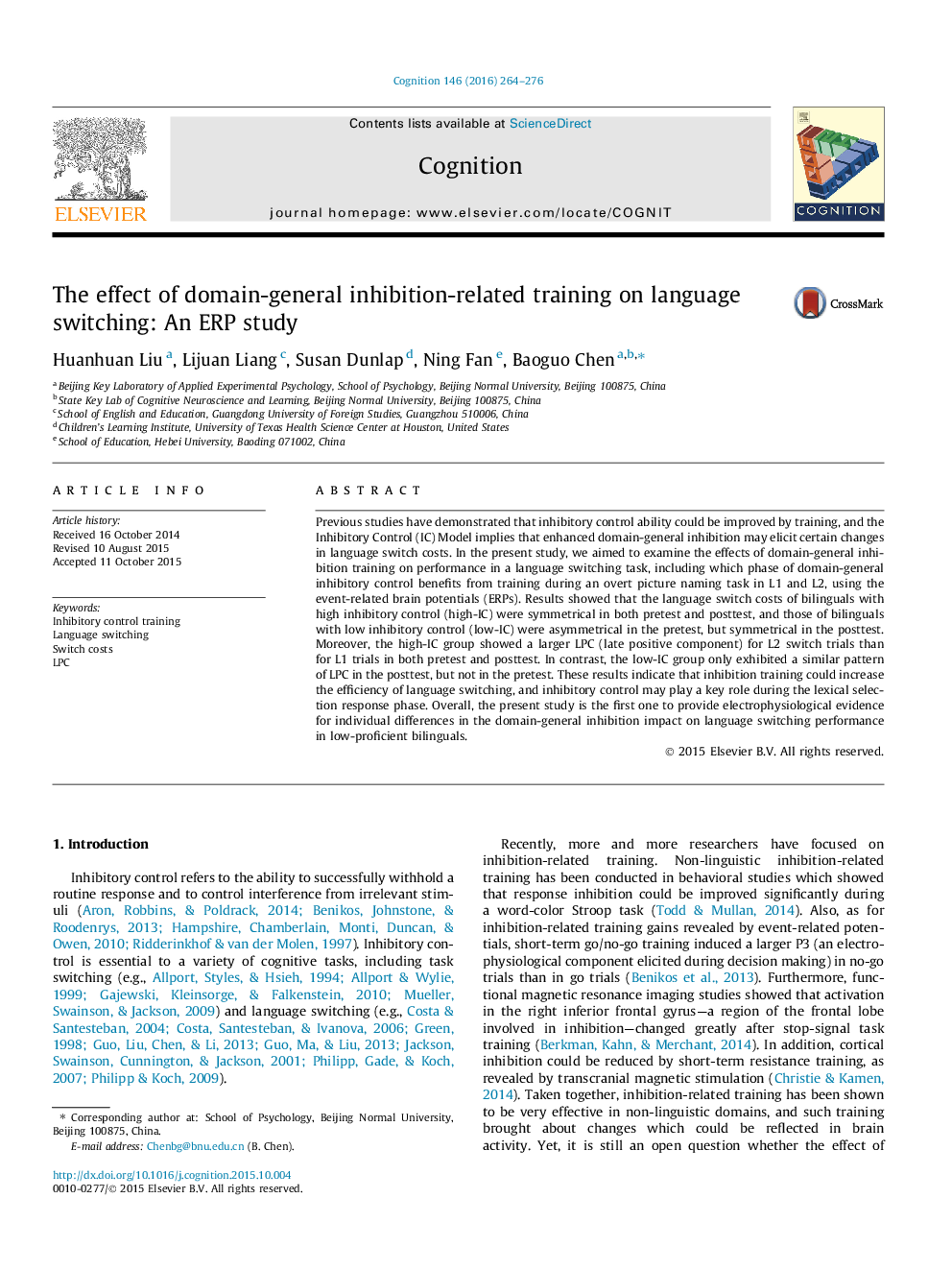| Article ID | Journal | Published Year | Pages | File Type |
|---|---|---|---|---|
| 7286425 | Cognition | 2016 | 13 Pages |
Abstract
Previous studies have demonstrated that inhibitory control ability could be improved by training, and the Inhibitory Control (IC) Model implies that enhanced domain-general inhibition may elicit certain changes in language switch costs. In the present study, we aimed to examine the effects of domain-general inhibition training on performance in a language switching task, including which phase of domain-general inhibitory control benefits from training during an overt picture naming task in L1 and L2, using the event-related brain potentials (ERPs). Results showed that the language switch costs of bilinguals with high inhibitory control (high-IC) were symmetrical in both pretest and posttest, and those of bilinguals with low inhibitory control (low-IC) were asymmetrical in the pretest, but symmetrical in the posttest. Moreover, the high-IC group showed a larger LPC (late positive component) for L2 switch trials than for L1 trials in both pretest and posttest. In contrast, the low-IC group only exhibited a similar pattern of LPC in the posttest, but not in the pretest. These results indicate that inhibition training could increase the efficiency of language switching, and inhibitory control may play a key role during the lexical selection response phase. Overall, the present study is the first one to provide electrophysiological evidence for individual differences in the domain-general inhibition impact on language switching performance in low-proficient bilinguals.
Related Topics
Life Sciences
Neuroscience
Cognitive Neuroscience
Authors
Huanhuan Liu, Lijuan Liang, Susan Dunlap, Ning Fan, Baoguo Chen,
